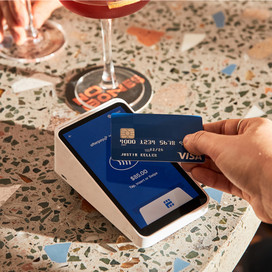Table of contents
If you’re a small business owner or entrepreneur, GST is something you’ll need to understand. Most businesses will be registered for GST, so it’s important to understand what it’s all about, and the responsibilities you have as a business owner. So, let’s take a deeper look into what the GST is, how to calculate it, and how to make sure your record-keeping and reporting practices are up to date.
What is GST?
The GST is Australia’s Goods and Services tax. It applies to the sale of most goods and services that are sold or consumed in the country. The GST was introduced on 1 July, 2000, and was met with plenty of uproar at the time. It seems that not many people like the GST, however in reality it did replace a number of state and federal taxes at the time.
The rate of GST is 10%, so, a product that retails for $100 will end up costing $110. Alternatively, the $100 price may already include GST. We’ll get into those specifics shortly.
There is also a common misconception that GST is a business expense. While it’s true that you do spend some time working out how to manage the GST, it’s a tax that is ultimately paid by consumers, not businesses.
There are a few exemptions to GST, and while we won’t list them all here, basic foods and healthcare items are some of the things that don’t attract GST.
How GST works
GST is calculated on the sale price of goods and services. There are basically two ways that prices are advertised:
- GST inclusive
- Plus GST
GST inclusive is the most common way that we see prices. Particularly in a retail environment, and this makes sense. If an item is GST inclusive, the tax has already been calculated and included in the advertised price.
When products and services are listed as ‘Plus GST’, it means the tax hasn’t been added in yet. This is more common for services, for example, an electrician may advertise their rates as $75 per hour, plus GST. We’ll get into the specifics of how to calculate Australian GST a little later.
The basics of a Business Activity Statement (BAS)
Once you’ve answered the question of ‘how is GST calculated?’ and you’ve got all your records in order, you’ll need to know how to pay your GST. Essentially, GST is a tax that’s collected by businesses on behalf of the government. So, any GST you collect on your sales, you need to pay to the government on a monthly or quarterly basis.
You do this using a Business Activity Statement (BAS). Usually done electronically, you simply record the details of your total sales, the amount of GST you’ve collected, and the amount of GST you’ve paid. Any GST you pay on eligible business expenses is offset against the GST you’ve collected. The balance is paid to the ATO through the BAS.
What you need to calculate GST
There are a few tools you can use to calculate GST. These range from basic systems like a spreadsheet with formulas you’ve created (not the easiest way to do it) through to letting your invoicing and payment systems manage it for you. This is obviously the easiest and most accurate way of doing things.
There are basic calculators online, which might be helpful if you don’t have a proper POS system in place. But the best way to do it is with a comprehensive POS system that handles everything. You’ll enter product prices in, and GST is calculated automatically. This means GST is shown clearly on receipts, and the figures are automatically recorded in your accounting program when you make a sale.
How to calculate GST
GST is calculated by multiplying the price of an item by the GST rate. For example, a product that retails for $100 will end up costing $110. More commonly, the $100 price may already include GST. This guide will talk you through the different ways you can calculate GST for your business.
1. Adding GST
If you want to add GST to the existing price of a product or service, simply multiply the amount by 0.1 (or 10%). This gives you the amount to add on.
Alternatively, if you want the total price, simply multiply the original price by 1.1 (110%).
Example:
Price excluding GST: $100
GST amount: $10
Price including GST: $110
2. Subtracting GST
Sometimes you need to subtract GST to work out how much GST is included, or the pre-GST price.
To work out how much GST is included in a total price, divide the price by 11.
If you want the total price before GST was added, divide by 1.1.
Example:
Price including GST: $110
GST amount: $10
Price excluding GST: $100
Of course, all of this is a lot of work. Can you imagine manually calculating this for every product, and doing it every time you make a sale? It’s extremely time-consuming, which is why it makes sense to let POS technology do it for you.
How do tax invoices work?
Tax invoices are used to show customers how much tax they’ve paid for goods or services. There is a lot of other information on a tax invoice, such as purchase details, your ABN, company details, customer details, subtotals, totals, the date and payment options. But it also clearly breaks down the amount of GST included in each item, as well as the total amount of GST paid.
These are essential if you’re a GST-registered business. But it’s also helpful when you make business purchases, because you need to record the GST you’ve paid too. Remember we mentioned the GST you pay offsets some of the GST you collect? That’s why tax invoices are one of the business receipts you need to keep.
Payment processing and invoicing with Square
Invoicing and payment processing is so much easier with quality tools such as the ones available from Square. You’ll be able to issue tax invoices quickly and easily. Even better, you can get paid fast. Square’s invoicing software also lets you accept payments online, making it easy for people to pay you. You get paid faster, and spend less time chasing up overdue accounts.
Also, by choosing Square’s payment processing system, you can get paid online, at your POS terminal, over the phone and it’s all fast. Plus, you’ll record all of that GST information easily, making everything a breeze at the end of financial year!
![]()











